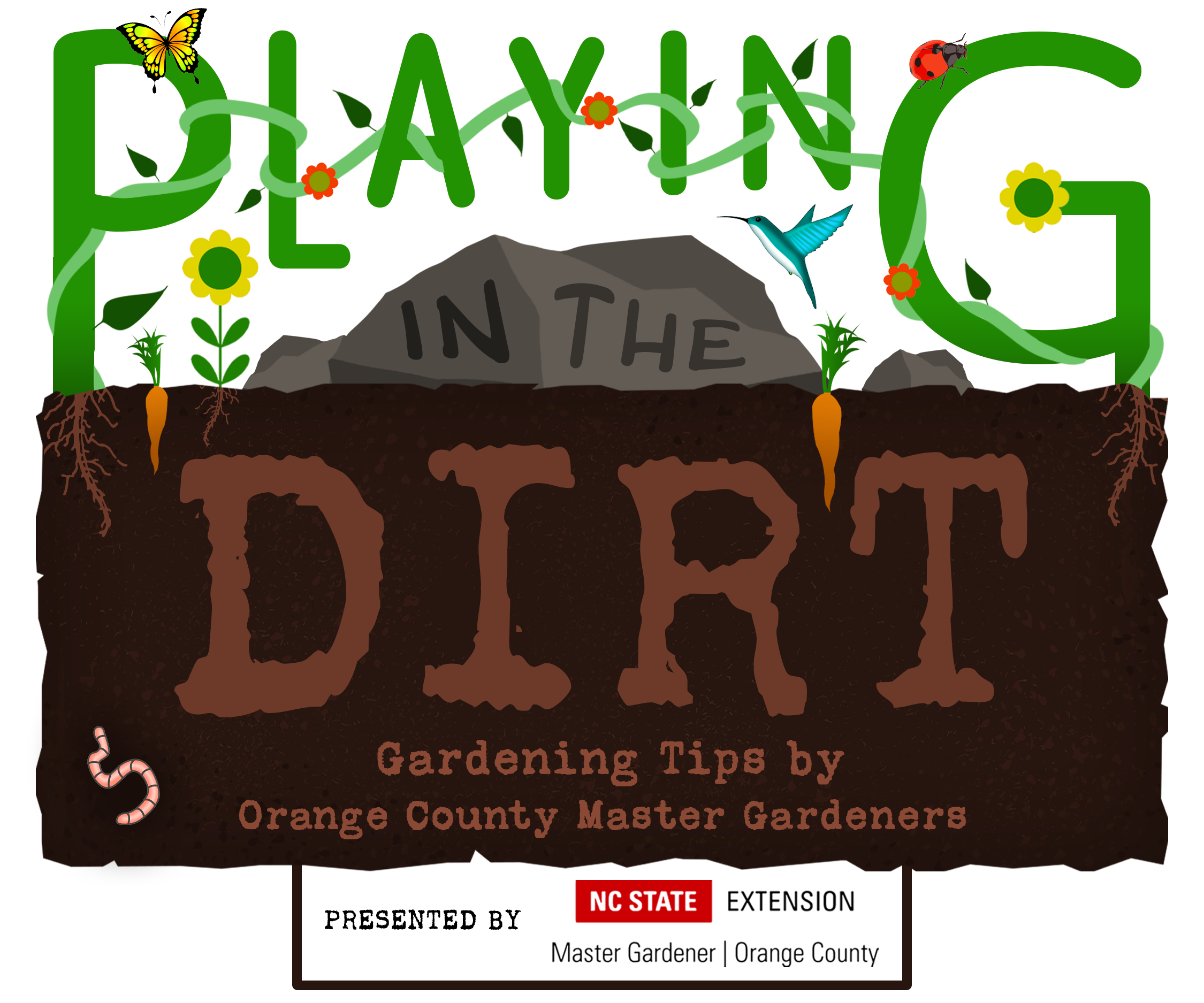
97.9 The Hill and Chapelboro.com have partnered with Orange County Master Gardeners for “Playing in the Dirt,” a monthly column exploring the fertile ground of home gardening in our community and intended to provide the information and inspiration gardeners of all skills levels need to flourish! Check back on Chapelboro each month for a new subject – from our gardens to yours!
By Cindy Stubbs, Orange County Master Gardener volunteer
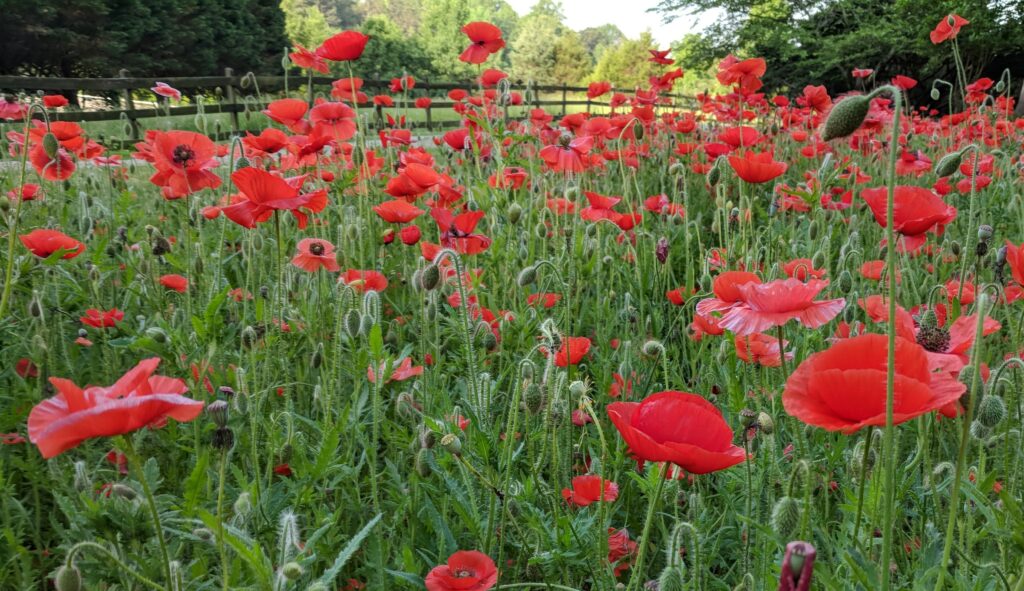
Poppies
Some of the first spring blooms in abundance are wildflowers. How do you create a stunning display of wildflowers and provide an important source of food and habitat for pollinators like bees and butterflies? This article will guide you through the process of creating a wildflower patch that will be the envy of the neighborhood and bring much enjoyment to you and the local pollinators!
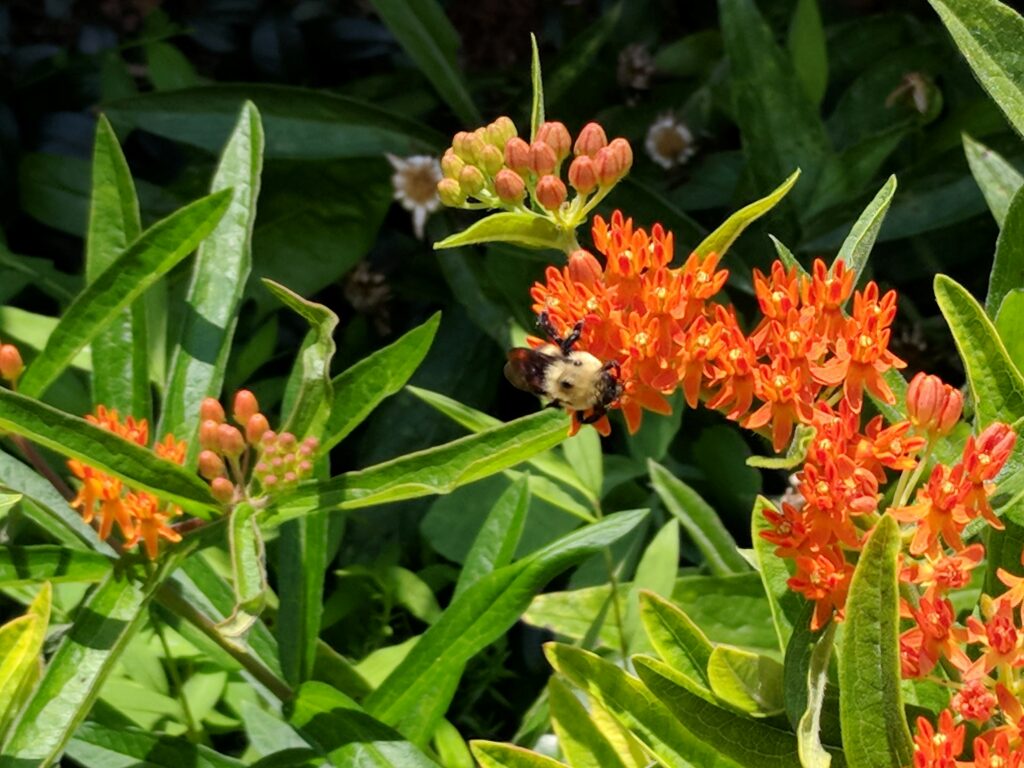
Butterfly Weed
What Are “Wildflowers”?
Wildflowers are typically native to a region and have evolved to thrive in the local climate, soil and environmental conditions. They are adapted to survive with less maintenance and can be an important source of food and habitat for native wildlife.
Wildflowers also can include an introduced species or non-native plants that have naturalized in an area. These flowers can still provide important ecological benefits, such as food and habitat for pollinators, but they may not be as well adapted as native species.
With a looser, more unstructured growth habit than cultivated flowers, wildflowers are a great choice for gardeners who prefer a more informal look in their gardens.
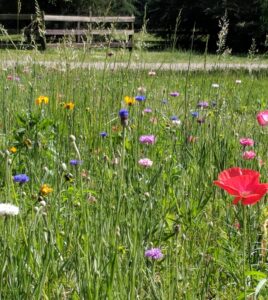
Bachelor Buttons, Poppies, Tickseed, Coreopsis
Where to Plant Wildflowers
Choose a sunny location as many wildflowers are sun loving, requiring six to eight hours of good light. Some wildflowers can tolerate dappled shade (four to six hours of sun) but may be less vigorous plants. Check seed packages and tags on transplants to find the light requirements of the plants.
Not all sunny areas are created equally — pick a location and then notice how the light changes during the season. Is it more shaded when the leaves are on the trees? Is the light blocked by a building or other structure at some point during the day? Sometimes you have to try an area to see if it works and then increase the number of plants if you’re successful. If you have specific wildflowers in mind to plant, check their light requirements and choose a spot based on their needs.
Preparing the Site
Once you have chosen a site with proper light, prepare the soil for planting seeds or transplants. When preparing a garden area, a soil test is an important start so you can determine if supplements need to be added. Find detailed information about soil testing in the North Carolina Extension Gardeners Handbook and obtain all the materials you need from your county’s Cooperative Extension office. Fortunately, wildflowers are forgiving and can grow in poor soil but they will thrive if given appropriate nutrients.
Remove any grass, weeds or debris in the selected site. Wildflower seeds can be thrown on grassy areas without preparation, but the success rate is much lower.
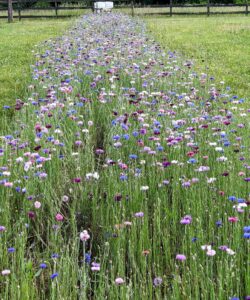
Bachelor Buttons
There are several methods for removing grass:
- Till the site and let it sit for two to three weeks, allowing the organic material to break down before planting.
- Cover the site with a tarp during the hot summer months, killing the plant material in a few weeks as temperatures soar under the tarp.
- Use cardboard and compost to kill grass and other unwanted plant material. See this article on sheet mulching for details. This method takes as long as six months and the longer you allow the decomposition process to occur, the better your results will be.
Add any nutrients and supplements before planting based on your soil test results. An herbicide can be sprayed to kill any remaining grass in the area where you want to plant, but you need to wait several weeks before planting for the herbicide to break down. Carefully read and follow all label instructions on the herbicide before use.
Planting Wildflower Seeds or Transplants
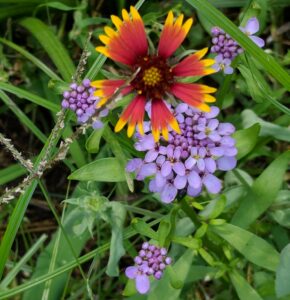
Blanket Flower, purple
The timing of your planting depends on whether you’re planting seeds or transplants. Most wildflowers grown from seed in our area (the southeast) should be planted from October through December, allowing them to germinate and grow slowly over the mild winter months and then burst into bloom early in spring. Seeds should be planted at a depth of 1/8 to 1/4 inch (refer to seed package instructions). Watering is not required as the seeds will lie dormant until climate conditions encourage their growth. The young plants sprouting in spring do not need to be protected from frost because they will be well-adapted to temperature fluctuation. You can achieve a meadow-like look to your garden by planting a wildflower seed mix.
Planting transplants gives you greater flexibility on when you plant your wildflowers, though fall and early spring are preferable. Using transplants also makes it easier to plan and structure your garden and consider bloom time, height, color and other variants that affect the look of the garden. Transplants should be planted at the same depth they were in their original container. Planting on an overcast day will help the young plants adjust to their new environment. Once in the ground, water the young plants regularly until their roots are established.
Most wildflowers bloom their first year in the ground. Some wildflowers are biennials, however, and bloom the second year in the ground. Two popular wildflowers are Black-eyed Susan (Rudbeckia fulgida) and Sweet William (Dianthus sp.). If planted as transplants, these flowers will bloom in their first year.
Many (though not all) wildflowers are perennials and will come back each year; some are good reseeders and will recur predictably each and every year. Most true wildflowers are natives but wildflower seed packages may contain non-native seeds which will not thrive as well. Check the packets for seeds labelled for our area, such as “southeastern blends,” unless you have a special interest in trying to grow particular non-natives.
Maintaining Wildflower Gardens
Good news! Wildflower gardens don’t require a lot of maintenance. A meadow-like garden with a natural appearance can be allowed to reseed every year. Some weeding may be needed until the patch is well established and the wildflowers crowd out any grass. Overseeding the patch in the fall (spreading more seeds over and around current plants) in the early years can help establish the garden. Once established, water the flowers during dry spells if needed and deadhead spent flowers to help promote further blooming. Wait until late winter or early spring to cut back spent wildflowers. Leaving stems and stalks allows for natural reseeding and provides a habitat for birds and insects over the winter.
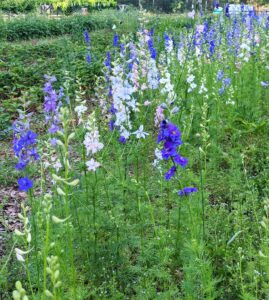
Larkspur
For a planned and structured wildflower patch, you may need to periodically thin and remove wildflowers that regrow from seed over the years. These transplants can be placed in other areas of your garden or shared with friends and neighbors. Some wildflower varieties, like Rudbeckia fulgida, are more prolific and spread easily so consider this characteristic when designing your garden.
Choosing Flowers
If planting seeds, starting with a wildflower mix labelled for our area is the best way to see which different types of wildflowers will grow well in your landscape. Most wildflower seeds are easy to grow if planted in the fall. If planted in the right soil and light conditions, most transplants also are easy to start and establish.
The way you want your garden to look will influence the flowers you’ll want to plant. For example, a meadow-look with flowers blooming all season can be a mix of whatever you like but you would want to be more particular about the flowers you choose if you have specific height, bloom time and color requirements. The Chatham Mills “Pollinator Paradise” Garden in Pittsboro is a demonstration garden created by Chatham County Extension Agent Debbie Roos. See the website for tips and resources for growing pollinator gardens, along with many beautiful photographs — or take a drive to Pittsboro!
Has this article piqued your interest so that you want to know more? Please check out these other resources as you prepare your landscape for the bounty of wildflowers and all the pollinators that will visit!
All photos were taken by Cindy Stubbs, Farmer at Firefly Farm
Additional Resources:
- Pollinators, North Carolina Wildlife Federation
- Growing a Pollinator Garden (with video), Justin Moore, NC State University Extension, 2019.
- NC Pollinator Toolkit, North Carolina Botanical Garden, 2019.
Check us out!
Have a plant or garden question? Email the Orange County Master Gardener volunteers at ocmgardeners@gmail.com or phone 919-245-2061.
Subscribe to The Garden Buzz, the Orange County Master Gardeners’ monthly newsletter, for gardening news and tips. And visit our website, The Orange Gardener.
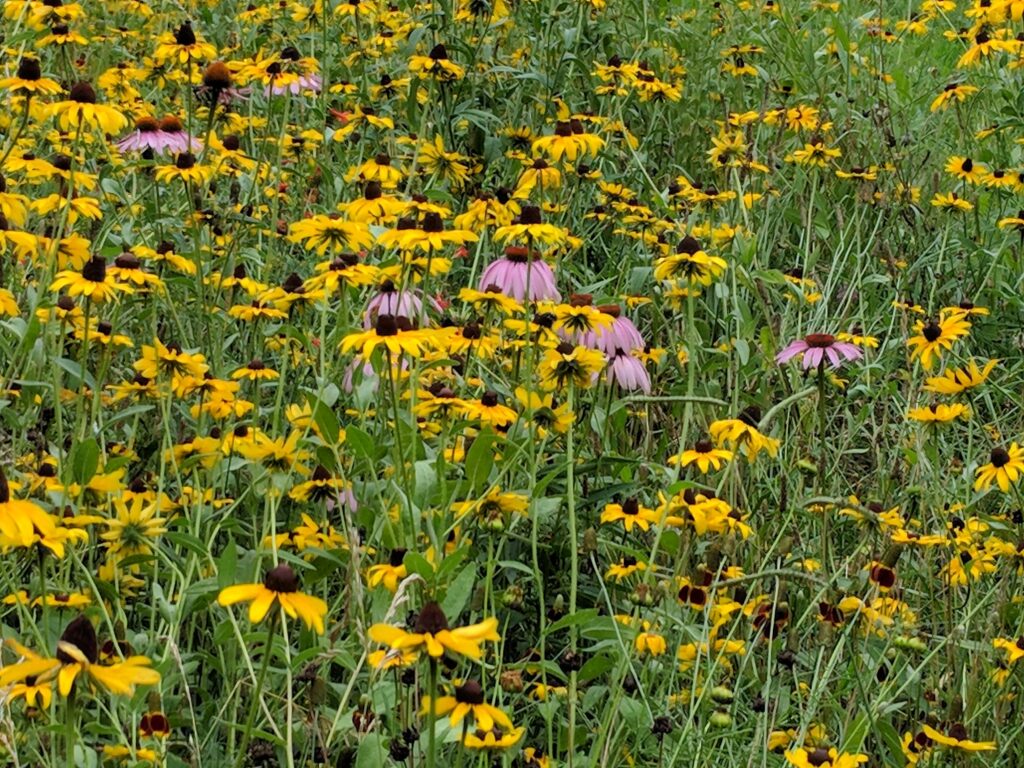
Black-Eyed Susans & Pink Coneflower
Chapelboro.com does not charge subscription fees, and you can directly support our efforts in local journalism here. Want more of what you see on Chapelboro? Let us bring free local news and community information to you by signing up for our biweekly newsletter.




